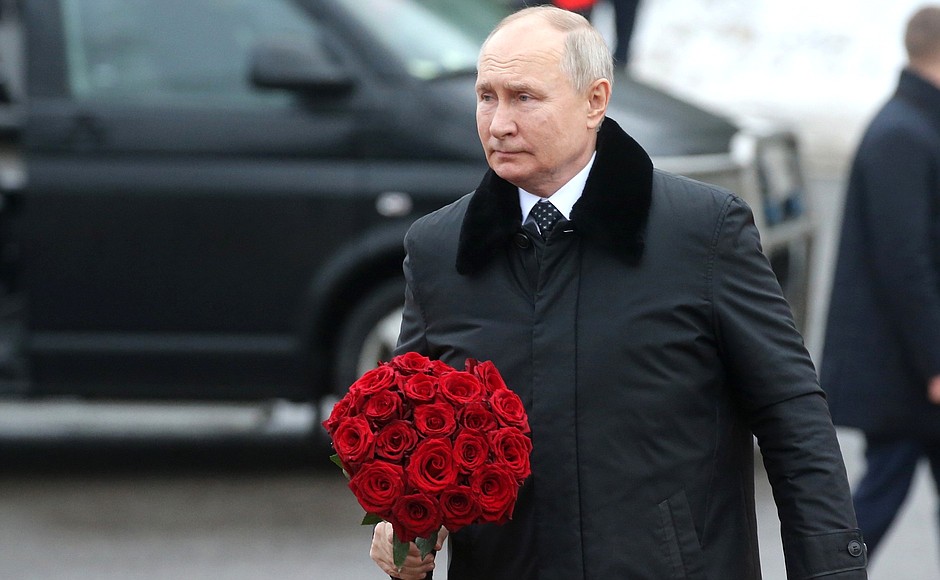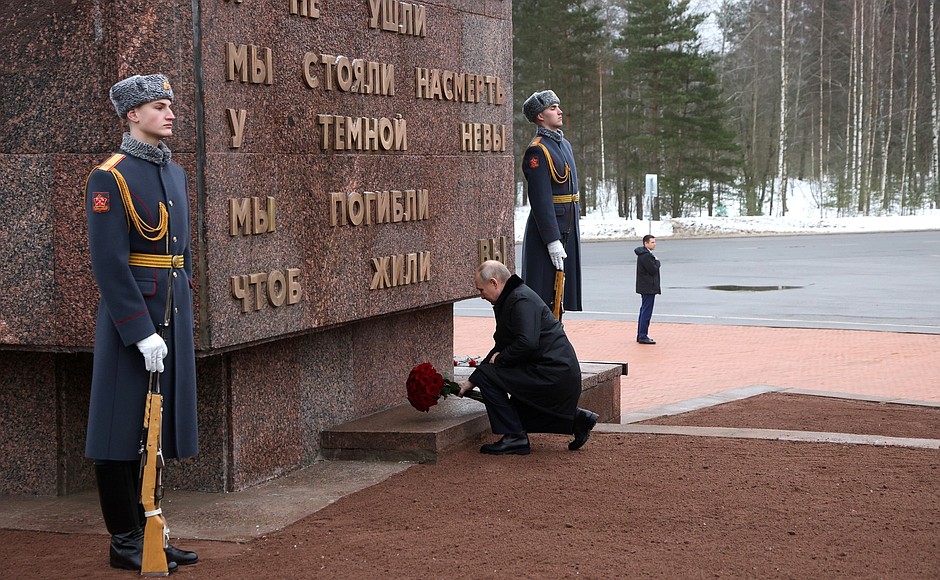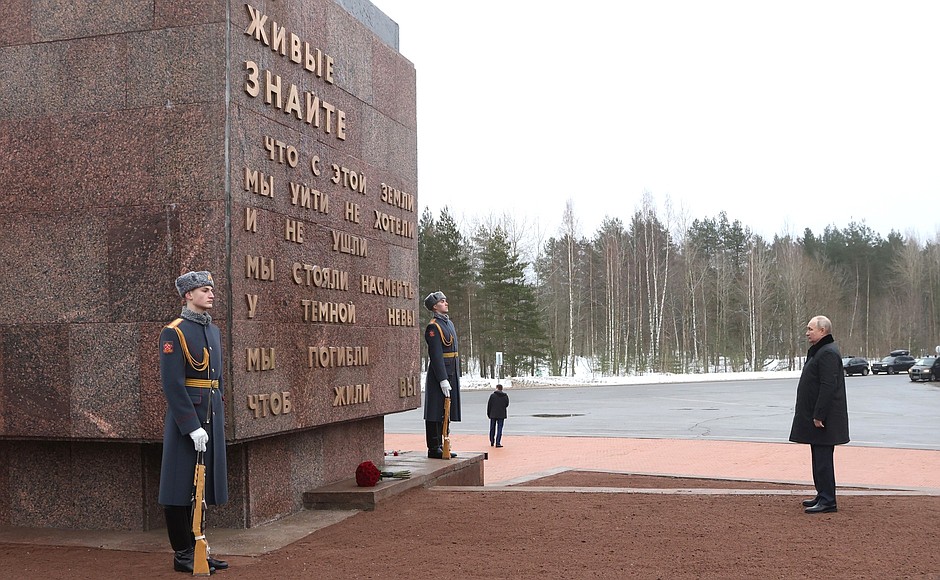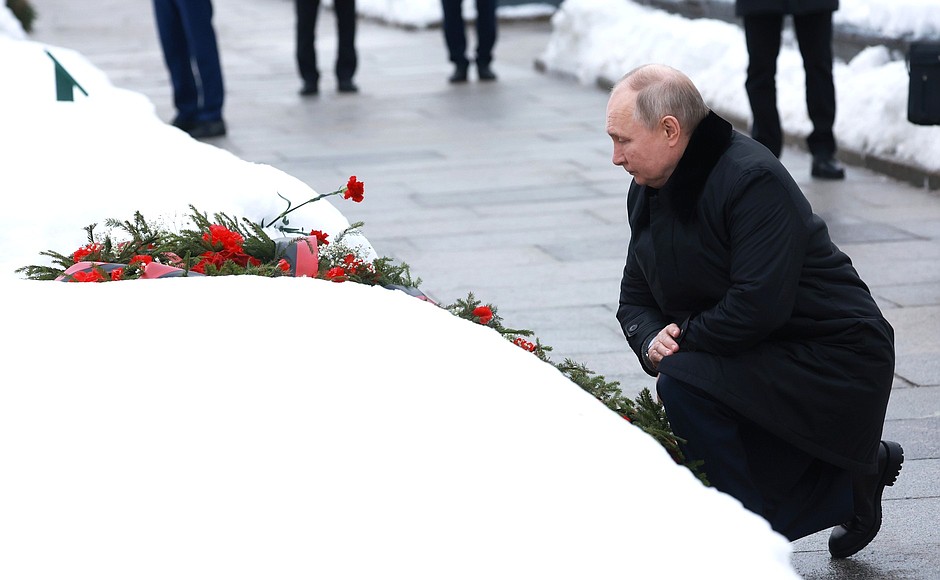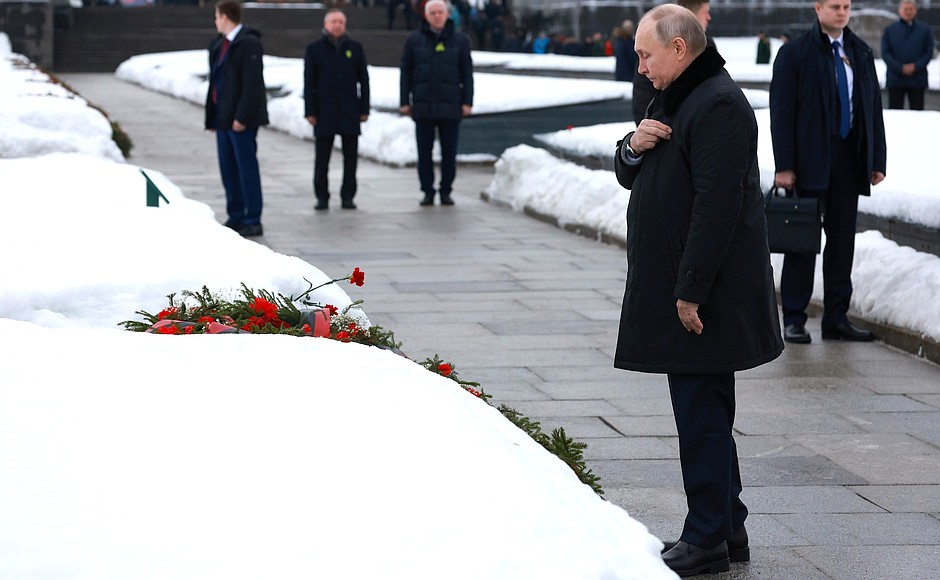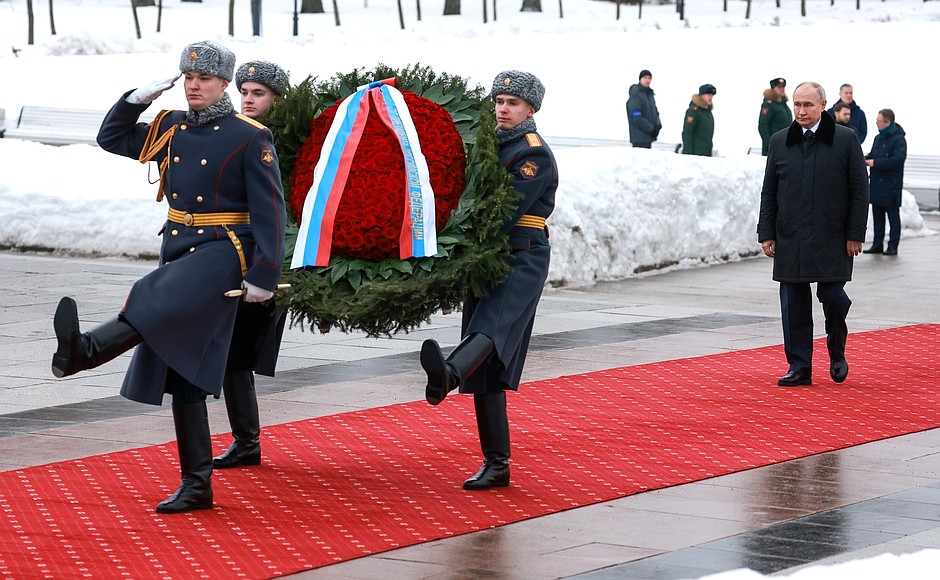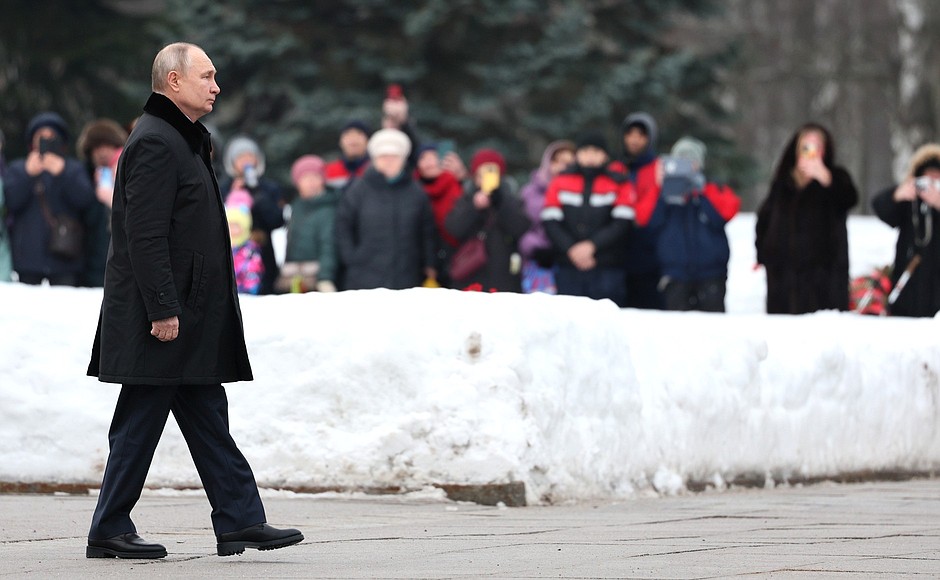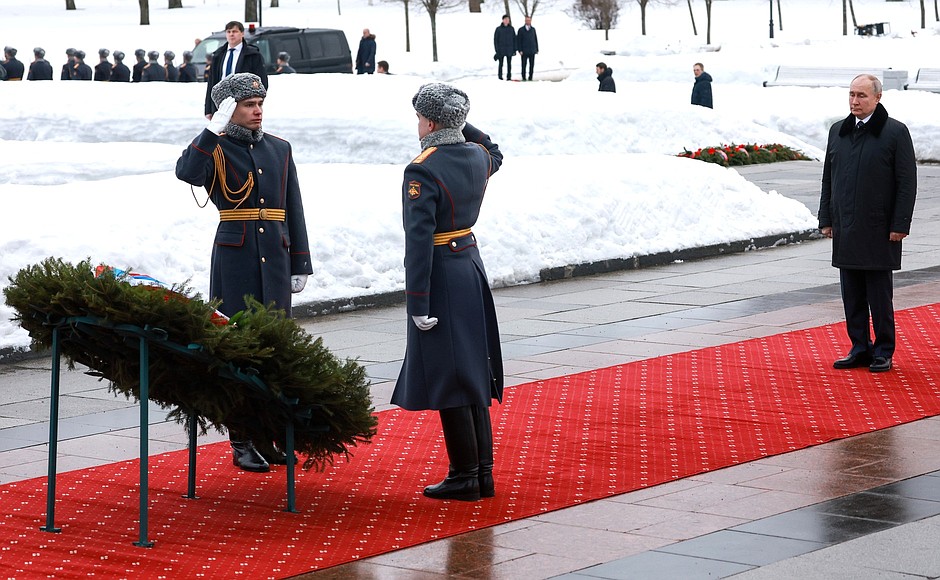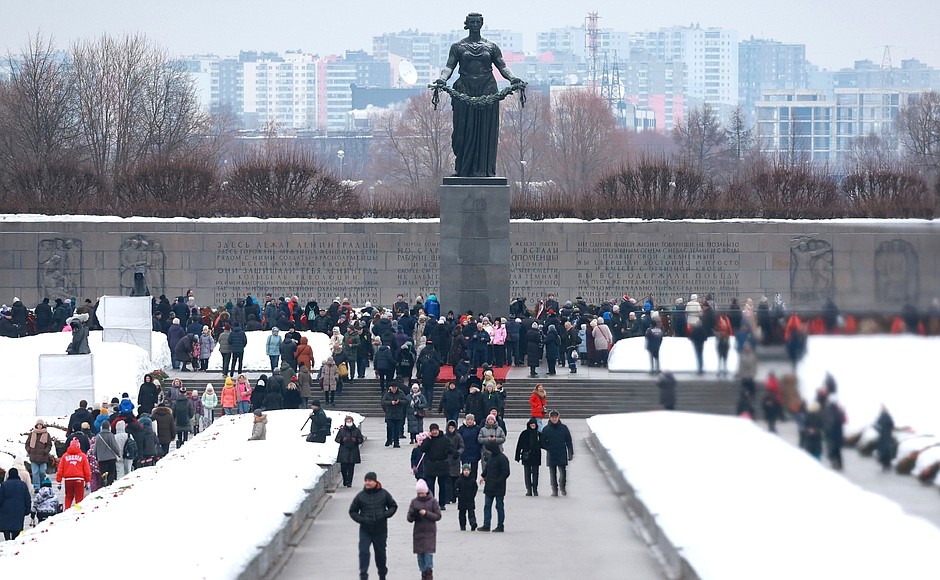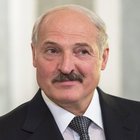The President laid flowers at the Landmark Stone monument at the Nevsky Pyatachok military-historical complex. From the first days of the siege, the Red Army fighters held back the superior enemy forces in that area, a small three-kilometre stretch of the frontline south of Leningrad, preventing the Nazis and their allies from approaching the city.
See also
After that, the President visited the Piskarevskoye Memorial Cemetery, where he honoured the memory of the fallen Leningrad residents and defenders of the city by laying a wreath at the Motherland monument. About half a million people are buried in mass graves at the Piskarevskoye cemetery. The words of poet Olga Berggolts, ”No one is forgotten, nothing is forgotten,“ are carved on the memorial wall behind the Motherland monument.
In the evening Vladimir Putin and President of the Republic of Belarus Alexander Lukashenko took part in a ceremony for unveiling a memorial to the USSR civilians who fell victim of the Nazi genocide during the Great Patriotic War. They also spoke at the concert held to mark the 80th anniversary of breaking the Nazi siege of Leningrad.
Leningrad is the only city in world history with a population of several million people that was able to withstand almost 900 days of encirclement. The siege by Nazi Germany lasted 872 days from September 8, 1941, to January 27, 1944. The ring was broken on January 18, 1943, and on January 27, 1944, a ceremonial salute was fired to mark the end of the blockade. By that time there were no more than 800,000 inhabitants left in the Northern Capital out of the three million who had lived in Leningrad and its suburbs before the siege.
